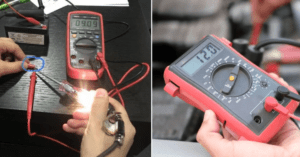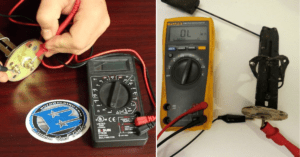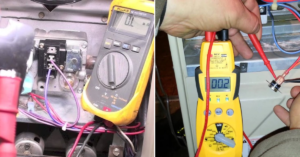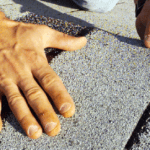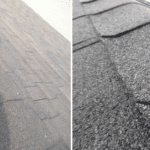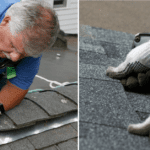How to Use a Hose-End Sprayer
Do you want to give your garden an even and consistent coating of fertilizer or pesticide? A hose-end sprayer is the perfect tool for the job! Spraying with a hose-end sprayer is easy and efficient, and it will save you time compared to applying products by hand. In this blog post, we’ll discuss how to use a hose-end sprayer properly so you can apply your products evenly across your landscape without any hassle! Keep reading to learn more about how a hose-end sprayer works, as well as helpful tips on using one safely.
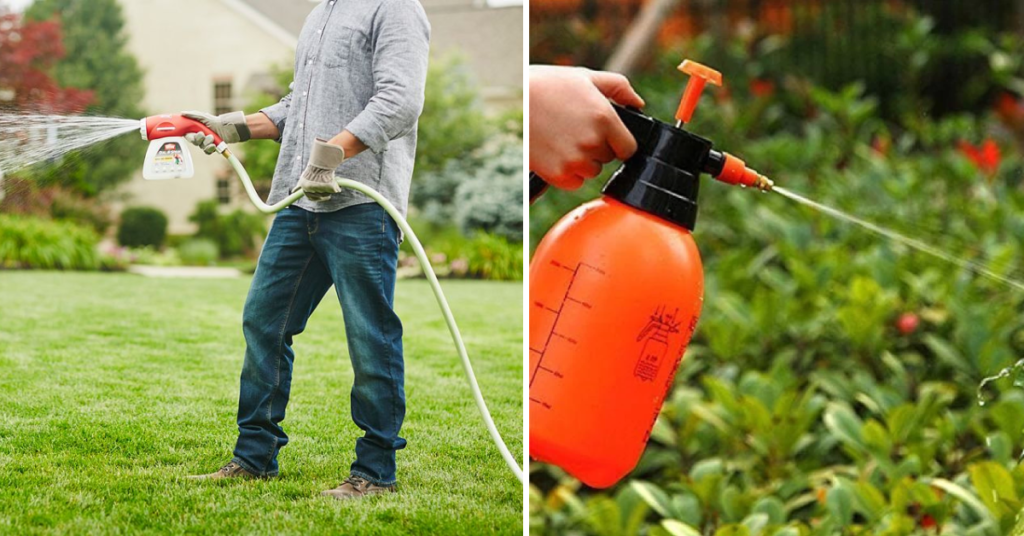
Types of Hose-End Sprayers
There are various types of hose-end sprayers available on the market, so it’s important to choose one that is best suited for your particular needs. The most common types include:
- Adjustable Hose-End Sprayer: This type allows you to adjust the concentration of the product being sprayed by controlling the flow rate and mixing ratio. It’s ideal for applying different concentrations of fertilizers or pesticides.
- Dial Hose-End Sprayer: Similar to the adjustable type, this sprayer has a dial that allows you to select different dilution ratios for your products.
- Siphon Hose-End Sprayer: This type relies on water pressure to mix and apply the product. It’s best used with liquid fertilizers or pesticides that can be easily siphoned.
- Hose-End Sprayer with a Built-In Tank: These sprayers have a built-in tank that holds the product and mixes it with water as it is sprayed. They are great for large areas and can be refilled easily.
Choosing the Right Product for Your Hose-End Sprayer
Before you start using your hose-end sprayer, it’s important to choose the right product for the job. Make sure to read and follow the manufacturer’s instructions carefully when selecting a product to use with your sprayer. Here are some general guidelines:
- Liquid fertilizers or pesticides are best used with siphon or built-in tank sprayers.
- Granular fertilizers or pesticides are best used with adjustable or dial sprayers.
- Always wear protective gear, such as gloves and a mask, when handling potentially harmful products.
Tools and Materials Needed for Using a Hose-End Sprayer
Before using a hose-end sprayer, make sure you have the following tools and materials on hand:
- Hose-end sprayer
- Product to be applied (fertilizer or pesticide)
- Water source
- Measuring cup or scale (if needed for specific product measurements)
- Protective gear (gloves, goggles, etc.)
Safety Precautions for Using a Hose-End Sprayer
As with any gardening tool, it’s important to take safety precautions when using a hose-end sprayer. Here are some tips to ensure safe and proper use:
- Read the instructions: Before using your sprayer, read the manufacturer’s instructions carefully to understand how it works and any special precautions you may need to take.
- Wear protective gear: Always wear gloves and goggles to protect your skin and eyes from any potentially harmful chemicals.
- Choose the right product: Make sure you are using the appropriate product for your specific needs, whether it’s fertilizer or pesticide. Read the label carefully before use.
- Mix properly: Follow the recommended mixing ratios on the product label to ensure proper application without causing any damage to your plants.
- Avoid spraying in windy conditions: Wind can cause the product to drift and potentially harm unintended areas or plants. It’s best to spray on a calm day.
- Rinse after use: After using the sprayer, make sure to thoroughly rinse it with clean water to avoid any potential buildup or clogs for future use.
2 Easy Steps for Assembling the Hose-End Sprayer
Step 1: Attaching the Sprayer to the Hose
- Inspect the sprayer: Before attaching it to the hose, make sure there are no damaged or missing parts.
- Remove any attachments from the end of your hose: This may include a nozzle or other attachment that could interfere with the sprayer’s connection.
- Screw on the sprayer: Screw the hose-end sprayer onto your hose by twisting it clockwise until it is securely attached.
Step 2: Adjusting the Dilution Ratio
- Fill the sprayer: Fill the sprayer with your chosen product, following the manufacturer’s instructions for the appropriate amount.
- Adjust the dilution ratio: Depending on your type of sprayer, either adjust the flow rate or use the dial to select the desired dilution ratio.
- Mix and spray: Turn on your water source and spray the desired area, making sure to cover all plants evenly.
Congratulations, you have successfully assembled and used your hose-end sprayer.
Filling the Reservoir of a Built-In Tank Hose-End Sprayer
If you have a hose-end sprayer with a built-in tank, here’s how to easily refill it:
- Fill the tank: Unscrew the cap on top of the tank and fill it with your product.
- Securely replace the cap: Make sure the cap is tightly secured to avoid any leaks.
- Turn on the water: Turn on your water source and spray as usual. The product will automatically mix with the water as it is sprayed.
3 Simple Step-by-Step Guide for Using the Hose-End Sprayer
Step 1: Spraying Techniques
- Start at the farthest point: Begin spraying at the farthest corner of your landscape and work your way back toward the water source.
- Overlap for even coverage: As you spray, slightly overlap each pass to ensure all areas are evenly covered.
- Spray in a sweeping motion: Instead of just pointing and spraying, use a sweeping motion to evenly distribute the product.
Step 2: Coverage and Application Rates
- Follow product instructions for coverage: Each product will have specific instructions for how much to spray per square foot or yard.
- Avoid over-spraying: To avoid applying too much product, make sure to follow the recommended application rates and coverage areas.
- Adjust for various concentrations: If using an adjustable sprayer, adjust the flow rate or dilution ratio accordingly.
Step 3: Adjusting the Spray Pattern and Range
- Adjust for desired spray pattern: Some sprayers come with adjustable nozzles that allow you to change the spray pattern from a wide fan to a more targeted stream.
- Adjust for distance and reach: Use the nozzle or dial on your sprayer to adjust the range of your spray, depending on how far and wide you need it.
- Practice and fine-tune: It may take some practice to get the hang of adjusting the spray pattern and range, so don’t be afraid to experiment and fine-tune as needed.
You also can read How to clean an electric paint sprayer.
Cleaning and Maintenance for Your Hose-End Sprayer
To ensure your hose-end sprayer continues to work effectively, it’s important to regularly clean and maintain it. Here are some tips for keeping your sprayer in top condition:
- Rinse after each use: After using the sprayer, make sure to thoroughly rinse it with clean water to avoid any potential buildup or clogs.
- Remove and clean nozzle attachments: If your sprayer has removable nozzles, take them off and soak them in warm soapy water before scrubbing and rinsing.
- Check for clogs: If you notice any clogs or blockages, use a small brush or toothpick to remove them.
- Store properly: Once clean and dry, store your sprayer in a cool, dry place to avoid any damage from extreme temperatures or moisture.
Following these steps will help ensure your hose-end sprayer stays in good working condition for years to come. Remember to always read the manufacturer’s instructions for specific cleaning and maintenance recommendations.
Tips for Using a Hose-End Sprayer Safely
- Choose a safe product: Make sure the product you are using is safe for your plants, pets, and children.
- Be mindful of wind direction: While spraying, be aware of the wind direction to avoid any potential drift onto unintended areas or people.
- Avoid contact with skin and eyes: Always wear protective gear when handling and applying products, and avoid contact with skin and eyes.
- Wash hands after use: After using the sprayer, make sure to thoroughly wash your hands with soap and water to remove any residue.
- Keep out of reach of children: Store your hose-end sprayer in a safe place where children cannot access it.
- Properly dispose of products and containers: Follow proper disposal guidelines for any leftover products or empty containers to avoid harm to the environment.
Remember, safety should always be a top priority when using any type of sprayer. Always read and follow all safety precautions outlined by the manufacturer.
Troubleshooting Common Issues for Your Hose-End Sprayer
- Uneven coverage: This could be due to a clogged nozzle or an improperly adjusted dilution ratio. Clean or adjust as needed.
- Leaking sprayer: Check all connections and make sure they are securely tightened. If the issue persists, there may be a damaged seal that needs to be replaced.
- The spray pattern is off: This could be due to a clogged nozzle or incorrect adjustment of the spray pattern. Clean or adjust as needed.
- Low water pressure: Make sure your water source is fully turned on and there are no kinks in the hose that may restrict water flow.
- Product not mixing properly: Check the dilution ratio and make sure it is set correctly. If using a built-in tank sprayer, make sure the cap is securely tightened.
If these troubleshooting tips do not resolve the issue, consult the manufacturer’s instructions for further guidance or contact customer support for assistance.
FAQs on How to Use a Hose-End Sprayer
Can I use any product in a hose-end sprayer?
No, not all products are suitable for use in a hose-end sprayer. Always check the manufacturer’s instructions and warnings before using any product.
How often should I clean my sprayer?
It is recommended to clean your sprayer after each use to avoid any potential buildup or clogs.
Can I adjust the dilution ratio for my sprayer?
Some hose-end sprayers come with adjustable settings for dilution ratios, while others may have a fixed setting. Refer to the manufacturer’s instructions for guidance on adjusting the dilution ratio.
Can I use a hose-end sprayer for indoor plants
It is not recommended to use a hose-end sprayer for indoor plants, as they may not have the necessary pressure or reach for indoor use. Instead, opt for a water can or hand-held sprayer.
Can I use hot water in my hose-end sprayer?
No, it is not recommended to use hot water in your sprayer as it may damage the internal components and affect its effectiveness. Stick to using cold or lukewarm water.
Conclusion
In conclusion, having the right hose-end sprayer is crucial for applying pesticides and fertilizers to your garden, lawn or shrubs. Different types of hose-end sprayers may be used depending on what you’re spraying liquid fertilizer, insecticides, weed killers or other chemicals. It is important to keep safety in mind at all times when choosing, assembling and using a garden sprayer that attaches to and sprays through your garden hose. Make sure that you choose the product best suited for the job. Pay close attention when filling and setting up the reservoir and nozzle according to the instructions provided.
After following these steps properly, you can feel good knowing that your yard will be healthy and happy with minimal toxins. If you take the time to make sure you always use the correct hose-end sprayer for each application of chemicals, your plants will thank you! So get out there and get gardening!
